Cockatoo Island
Cockatoo Island is a World Heritage Site that offers many fun activities and interesting places to poke around and explore

Cockatoo Island is situated in the centre of beautiful Sydney Harbour in a very predominate location centralized at the meeting of three waterways. It is a brief 10-minute city ferry ride from Darling Harbour or just over 20 minutes from Circular Quay. This reclaimed industrial area and former home to convicts are rich in history, resulting in it being listed as a World-Heritage-Site listed by UNESCO — (United Nations Educational, Scientific and Cultural Organization) in 2010.
History
Cockatoo Island is the largest Island in Sydney Harbour. The impressive 18 hectares or 44-acre island was first used by the British in 1839 to house repeating offenders and to alleviate the problem of the overcrowded prisoners on Norfolk Island. Here, convicts were put to intense labour service cutting deep into the sandstone to build structures such as prison barracks, silos for grain storage, official residences, a military guardhouse plus the Fitzroy dry dock built between 1847 and 1877 — 10 painstaking years with the bare hands of convicts who were usually in waist deep water and iron leg shackles. When it was finished The Fitzroy dock was used to serve the British Navy and other ships.
In 1869 the prisoners were relocated and the prison was transformed into two sections becoming an orphanage and reformatory for girls in 1871. It was renamed to Biloela — an aboriginal name meaning Black Cockatoo.
By 1870, shipbuilding and repairing ships was the main industry for Cockatoo island. This business grew steadily and between 1880-1900 the Sutherland dry dock was built. During WWll Cockatoo island was the leading ship repair response in the south-west Pacific. After the war, the ships were changed back to commercial use. The ship building business continued on until 1979 when the last ship to be built on the island was the HMAS-the largest navy boat to be built in Australia. At present, it is still spotted occasionally in Sydney Harbour.
Things to see and do
Today there is no industrial use on the island and, after being off-limits to the public for over a century, you will find parkland and over 70 structures. Several of these buildings are open for you to explore, including the slipway and factories, some displaying creative exhibits.
There is no fee to visit the island. When you arrive you can simply explore the island yourself with the help of a map or you can sign-up for one of the guided tours of Cockatoo Island outlined on the official website.
There are two old tunnels that were used to transport workers and goods from one end of the island to the other: The Dog Leg Tunnel, which is 360 metres long and the Straight Tunnel which is the oldest of the two and was built in 1915. (During WWll it was modified to become an air-raid shelter). Both these tunnels are opened for the public to walk through. The Dog Leg Tunnel is equipped with a soundscape of what it was like on the island throughout different times of history.
On the higher level of the island is a prison mess, old industrial buildings and a grass tennis court.
You will find lookouts with harbour views that reach out across to Spectacle and Snapper islands.
Those that wish to learn more about this maritime island and the history of the people who occupied it can take an audio tour. There is so much to do on the island and exhibitions change so it's good to go more than once to get the full experience.
When visiting the island give yourself at least a 2 hour window to complete your walk; longer if you want to take the time to linger a while and learn about the maritime island's past, while taking in the beautiful harbour views.
There are boat rentals, swimming in a designated area and kids activities.
Those wanting to spend more than one day can stay overnight at the first urban waterfront campground in the world. The tents are all set up for you — a new trend called glamping. For more information, check the official site.
Food and Refreshments
When stopping for a meal, there are several restaurants and cafes to choose from. Societe Overboard at Parramatta Wharf offers breakfast and lunch along with hot and cold drinks. Cockatoo Island Marine Centre at Camber Wharf offers light fare and snacks along with tea, coffee, cold drinks, beer and wine. The popular Island Bar, located on the Eastern Apron serves drinks, cocktails and Italian cuisine for lunch or dinner and is open a bit later that the other establishments.
If you prefer, you can pack your own meal as there are many picnic areas on both the upper and lower level of the island. You should be aware that you are NOT allowed to bring alcohol on the island.
Facts For Your Visit
Fee: NoAddress: Cockatoo Island, New South Wales 2110, Australia
Cockatoo Island Reviews
Rated out of 5![]()
![]() Had a brilliant day out at Cockatoo Island with family and friends! We grabbed a map and went on the stamp hunt—once we collected all six, we got a fun little sticker as a reward. Such a great way to explore the place! Tried the cheeseburger there and it was absolutely delicious. There were other food options like pizza and a few food trucks, though they were a bit pricey. Loved that there was a spot to sit down, eat, and enjoy live music—someone was playing guitar and singing, which really added to the vibe. All up, a wonderful experience! 🤩💖
Had a brilliant day out at Cockatoo Island with family and friends! We grabbed a map and went on the stamp hunt—once we collected all six, we got a fun little sticker as a reward. Such a great way to explore the place! Tried the cheeseburger there and it was absolutely delicious. There were other food options like pizza and a few food trucks, though they were a bit pricey. Loved that there was a spot to sit down, eat, and enjoy live music—someone was playing guitar and singing, which really added to the vibe. All up, a wonderful experience! 🤩💖
haya tarazi - a week ago
![]() We took the short ferry trip from Barangaroo to a less crowded spot in Sydney Harbour. The remnants of this penal colony provide a stark contrast with modern architecture and skyscrapers across the waters. The establishment and grounds are well-preserved and worth an easy two hour stroll following the trail on visitor map. Audio commentary is available.
We took the short ferry trip from Barangaroo to a less crowded spot in Sydney Harbour. The remnants of this penal colony provide a stark contrast with modern architecture and skyscrapers across the waters. The establishment and grounds are well-preserved and worth an easy two hour stroll following the trail on visitor map. Audio commentary is available.
Zeph - a month ago
![]() Cockatoo Island was a fascinating place to visit! The mix of history, industrial ruins, and waterfront views made it a unique destination. Walking around the island, I could see remnants of its past as a shipyard and prison, which added to its charm.
The open spaces and picnic areas were perfect for relaxing, and the harbour views were stunning. It’s also a great spot for camping or just a day trip away from the city.
If you’re in Sydney, I definitely recommend taking a ferry to explore this hidden gem!
Cockatoo Island was a fascinating place to visit! The mix of history, industrial ruins, and waterfront views made it a unique destination. Walking around the island, I could see remnants of its past as a shipyard and prison, which added to its charm.
The open spaces and picnic areas were perfect for relaxing, and the harbour views were stunning. It’s also a great spot for camping or just a day trip away from the city.
If you’re in Sydney, I definitely recommend taking a ferry to explore this hidden gem!
Korean Traveller - 5 months ago
![]() Accessible by ferry. A lovely half day excursion. It's free to roam around. If you like you can pay to do an audio tour. We played the audio tour through instead of searching for the numbered red signs and using it as intended. There are two cafes on either end of the island. The island offers beautiful views and a lovely walk. There is a campsite and other lodging available on the island. Cockatoo Island was a film site for the Wolverine movie which was an interesting surprise. Sadly there are no cockatoos on the island anymore but there are some noisy miners.
Accessible by ferry. A lovely half day excursion. It's free to roam around. If you like you can pay to do an audio tour. We played the audio tour through instead of searching for the numbered red signs and using it as intended. There are two cafes on either end of the island. The island offers beautiful views and a lovely walk. There is a campsite and other lodging available on the island. Cockatoo Island was a film site for the Wolverine movie which was an interesting surprise. Sadly there are no cockatoos on the island anymore but there are some noisy miners.
L Dilley - 5 months ago
![]() Beautiful island!! Not a single cockatoo tho... it doesn't matter cause there's so much to do here. Alot of walking and exploring. You are immersed into the (very short) history of Australia. We hopped onto a ferry from Drumoyne to the island. The most interesting area was the convict prison section, it is a great insight into to the poor conditions that prisoners dealt with. Also!! Apparently they then transformed it into a girls school??? Like why do that, and who wouldve sent their kids here, surprise surprise they shut it down and turned back into a prison. Although I hate kids so hell yeah!!
Beautiful island!! Not a single cockatoo tho... it doesn't matter cause there's so much to do here. Alot of walking and exploring. You are immersed into the (very short) history of Australia. We hopped onto a ferry from Drumoyne to the island. The most interesting area was the convict prison section, it is a great insight into to the poor conditions that prisoners dealt with. Also!! Apparently they then transformed it into a girls school??? Like why do that, and who wouldve sent their kids here, surprise surprise they shut it down and turned back into a prison. Although I hate kids so hell yeah!!
sam - 2 months ago
![]()
Directions
| Sydney Ferry Line | Nearest Station | Walking Time |
|---|---|---|
| F3 | Circular Quay or Darling Harbour | 3 minutes |
How to get to Cockatoo Island by Sydney Ferry
From Circular Quay Wharf 5 or Darling Harbour Wharf 3 you can catch the F3 Parramatta Ferry which stops at Cockatoo Island. There are a couple of sailings per hour throughout the day which take about 8 minutes from Darling Harbour or 21 minutes from Circular Quay. Additional sailings operate out of Circular Quay from early morning until just after 11:30pm to round out the schedule. Those sailings skip Darling Harbour but make four other stops along the river and take a total of 26 minutes. Either way you'll enjoy a very scenic ride in Sydney's beautiful harbour.
You can download a Cockatoo Island Ferries Timetable here or use our 'instant directions' feature above to find the next sailing.
Map & Instant Route Finder
Click&Go Map and Route Finder with public transit, walking, driving or cycling directions. Get up-to-the-minute transit times for your route.
Accommodations near Cockatoo Island:
Photo Gallery
-

Photo Credit: Rmonty119 - cc license via Flickr -

Photo Credit: mishsparks - cc license via Flickr -
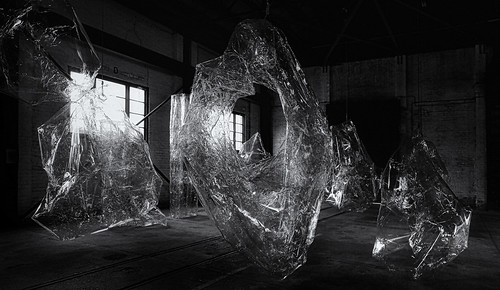
Photo Credit: Rmonty119 - cc license via Flickr -
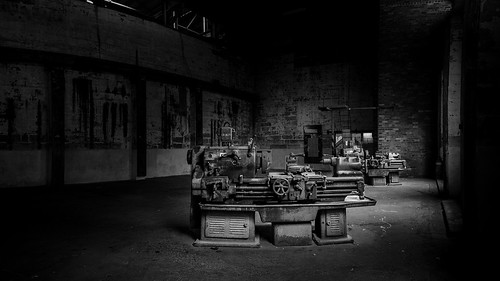
Photo Credit: Rmonty119 - cc license via Flickr -

Photo Credit: wyncliffe - cc license via Flickr -
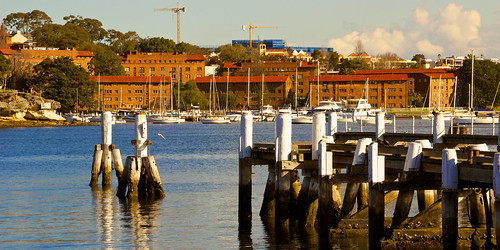
Photo Credit: wyncliffe - cc license via Flickr -

Photo Credit: David Lochlin - cc license via Flickr -

Photo Credit: hugh llewelyn - cc license via Flickr -

Photo Credit: hugh llewelyn - cc license via Flickr -

Photo Credit: hugh llewelyn - cc license via Flickr -
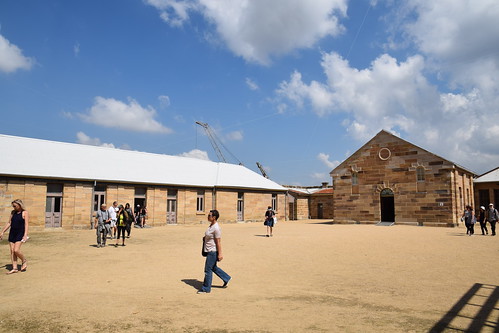
Photo Credit: hugh llewelyn - cc license via Flickr -

Photo Credit: hugh llewelyn - cc license via Flickr -
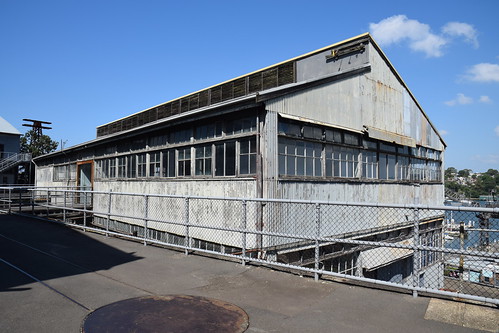
Photo Credit: hugh llewelyn - cc license via Flickr -

Photo Credit: David Lochlin - cc license via Flickr

